The original vegetation of Hong Kong no longer exists after centuries of human disturbance through his fire and axe. The existing vegetation is the secondary forest developed in the latter half of the twentieth century after the Second World War. The major types of vegetation in Hong Kong are woodland, shrubland and grassland. Minor formations occur in special habitats in relation to the freshwater and coastal environments.
Woodlands
The majority of the vegetation in Hong Kong belongs to evergreen broad-leaved forest of the subtropical flora of Southeast Asia. Dominant families include the Euphorbiaceae, Sapotaceae, Moraceae, Sterculiaceae, Myrtaceae, Fagaceae, Lauraceae, and Theaceae. Four types of plant communities can be classified by the characteristics of eco-physiognomy and species composition: (1) river-bank woodland, (2) lowland woodland, (3) low-hill forests, and (4) montane forests. The river-bank woodlands are commonly seen along rivers and low-lying areas, where Cleistocalyx operculatus, Syzygium jambos, Bischofia javanica, and Glochidion hongkongense are some examples of the dominant species. Lowland woodlands are mainly distributed in the hilly areas and valleys below 300 – 400 m, where the Euphorbiaceae, Moraceae, Sapotaceae, and Myrtaceae are the dominant families andFicus microcarpa, Endospermum chinense, Syzgium levinei, Antidesma bunius, Psychotria asiatica, and Aquilaria sinensis are some examples of the dominant species. Low-hill forests are mainly distributed on uplands between 300 – 800 m, where the Lauraceae, Fagaceae and Theaceae are dominant families and Machilus thunbergii, Machilus breviflora, Machilus chekiangensis, Cinnamomum porrectum, Schima superba, and Castanopsis fabri are some examples of the dominant species. Montane forests are found on the hilly reliefs at 700 – 1000 m, where the Fagaceae, Theaceae, Magnoliaceae, and Hamamelidaceae are the dominant families and Camellia kissi, Ternstroemia gymnanthera, Manglietia fordiana, and Pentophylax euryoides are some examples of the dominant species.
Lin Au Fung Shui Wood
There are also small but well-developed woodlands associated with many of the older villages and temples. These are the “Fung Shui Woods” (“Sacred or Lucky Groves”), which owe their existence to the protection afforded by the villagers in accordance with ancient traditions. These woodlands are often enriched by the planting of Aquilaria sinensis, Cinnamomum camphora, and fruit trees such as Euphoria longan, Litchi chinensis, Syzygium jambos and clumps of bamboos.
Many hillslopes have been reforested with Acacia confusa, Pinus massoniana, Pinus elliottii, Eucalyptus species and Lophostemon confertus. In recent years, more native trees have been planted on hillslopes, including Machilus chekiangensis, Castanopsis fissa, and Schima superba.
Bamboos in Hong Kong are scattered and shrubby. Common species are Arundinaria hindsii, Arundinaria shiuyingiana, A. cantorii, and Indocalamus sinicus.
Shrublands and Grasslands
Shrublands are widely distributed in Hong Kong. The most common one is the Baeckea frutescens – Rhodomyrtus tomentosa – Gordonia axillaries community. Common grasslands in Hong Kong include the Arundinella setosa – Cymbopogon caesius – Dicranopteris pedata community and the Miscanthus sinensis – Ischaemum indicum community.
Coastal Habitats
Many plants tolerant to coastal conditions can be found on the long and irregular coastline of Hong Kong. On sandy beaches, pioneers and sand-binding plants such as the Ipomoea pes-caprae, Vitex rotundifolia, Spinifex littoreus and Wedelia prostrata frequently occur on the seaward side of the beach. These are followed by the shrubby Clerodendrum inerme, Pandanus tectorius, Scaevola sericea, and the larger shrubs or trees of Hibiscus tiliaceus, Macaranga tanarius, and Cerbera manghas towards the back of the beach. At the back of the rocky and boulder-strewn beaches, the creepers Asparagus cochinchinensis, Morinda parvifolia, and the shrubs Scaevola sericea, Pandanus tectorius and Phoenix hanceana are commonly found. On muddy shores, Avicennia, Aegiceras, Excoecaria and members of the Rhizophoraceae occur. Dwarf mangroves on muddy shores, for example, the Kandelia obovata – Aegiceras corniculatum – Avicennia marina community, Acanthus ilicifolius community and the Acrostichum aureum community are also common on muddy shores
Freshwater Habitats
The streams in Hong Kong are often small and swift-flowing. They may become torrential with the summer rains but tend to remain very low or even become a series of isolated pools during the dry winter months. Plants that are rooted on the stream banks or on the exposed streambeds include Hydrocotyle, Ludwigia, Polygonum, Acorus and Eriocaulon species.
Flora Conservation
The AFCD implements flora conservation work mainly through the following measures:
1. Species Protection:
Under the Forests and Countryside Ordinance (Cap. 96), damaging plants in any forest or plantation on government land is prohibited. Some rare and attractive indigenous plants, such as Camellia species, Enkianthus quinqueflorus, Impatiens hongkongensis and Iris speculatrix, are specifically listed in the Forestry Regulations to control their sale or possession.
2. Habitat Protection:
About 38% of the land area in Hong Kong is designated as country parks and special areas under the Country Parks Ordinance (Cap. 208). The AFCD manages the country parks and special areas, within which no new development shall be carried out without the prior approval of the Director of Agriculture, Fisheries and Conservation. Many rare plant populations in Hong Kong are located within country parks and under statutory protection. The listing of Sites of Special Scientific Interests (SSSIs) is an administrative measure to ensure that concerned government departments are aware of the scientific importance of such sites and that due consideration is given to conservation when developments in or near these sites are proposed. There are now 64 SSSIs, a large proportion of which are listed owing to their floristic importance. For instance, Mau Ping at Ma On Shan is listed as an SSSI in recognition of the presence of the largest population of Camellia crapnelliana in Hong Kong.
3. Propagation:
Various methods, such as seed collection, cutting and air layering, have been used to propagate rare and endangered plants. The seedlings are produced with care in nurseries for planting in their potential natural habitats. Transplantations may also be carried out if their habitats are threatened. Successful examples of propagation include Keteleeria fortunei, Camellia crapnelliana and Camellia granthamiana. The AFCD has also set up the Shing Mun Arboretum for ex-situ conservation. About 300 species including some rare species have been established there.
Besides the vascular plants, more than 300 species of bryophytes and 260 species of lichens are known in Hong Kong. Such a diverse and invaluable local flora deserves our care and appreciation.

Woodland at the Peak, Hong Kong Island

Lin Au Fung Shui Wood
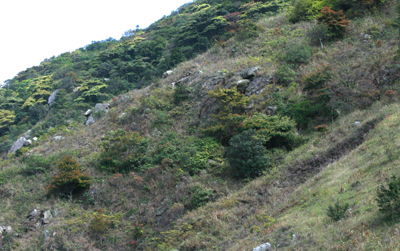
Shrubland at Lantau Peak, Lantau Island
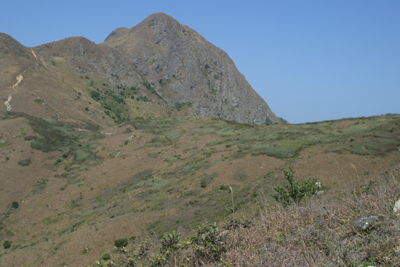
Grassland on Ma On Shan
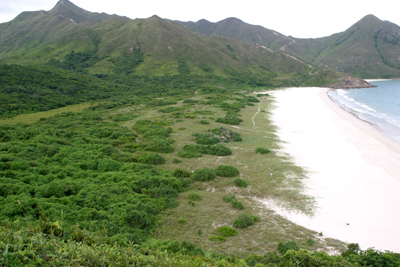
Sandy Shore at Tai Wan, Sai Kung
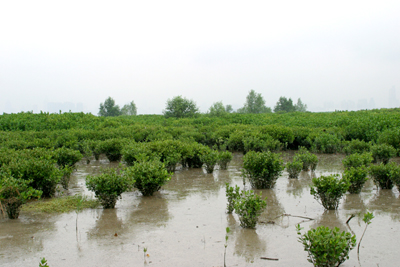
Mangrove in Mai Po
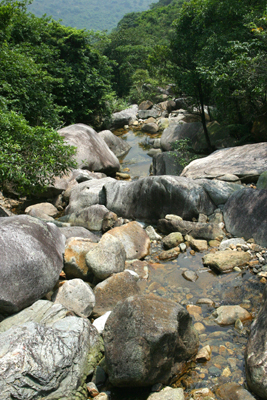
Hillstream in wet season
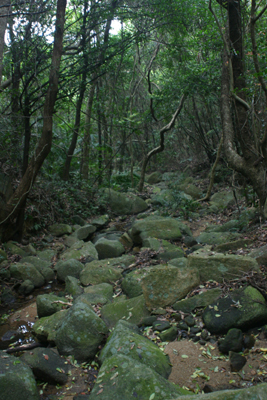
Hillstream in dry season
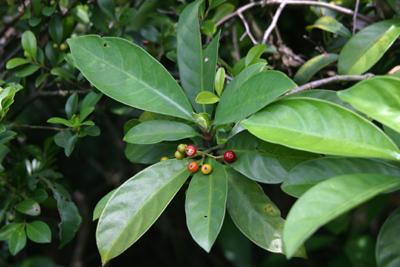
Psychotria asiatica - A common shrub in wooded areas

Machilus chekiangensis -The most common tree in forests
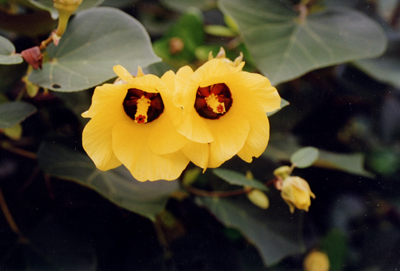
Hibiscus tiliaceus - A common seashore plant

Dicranopteris pedata - A common plant on hillsides